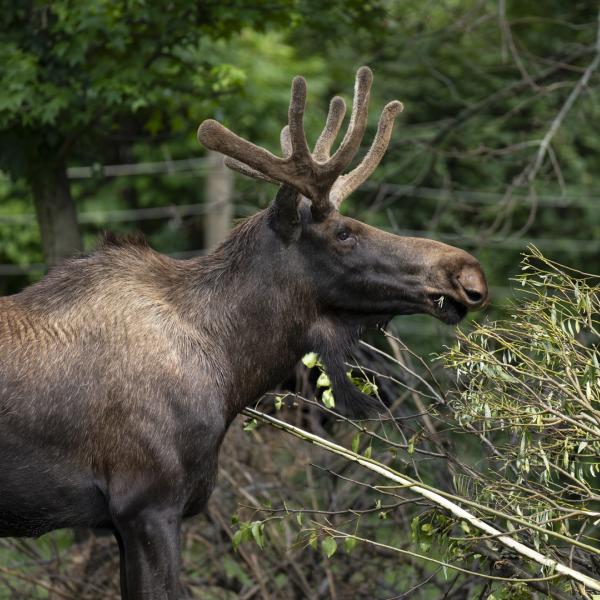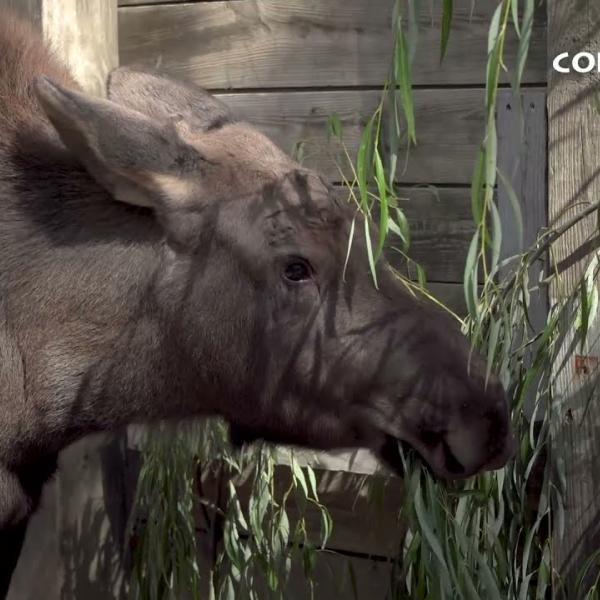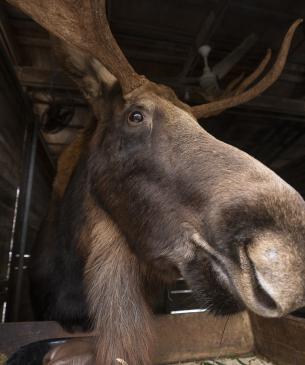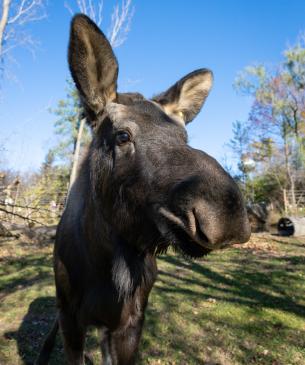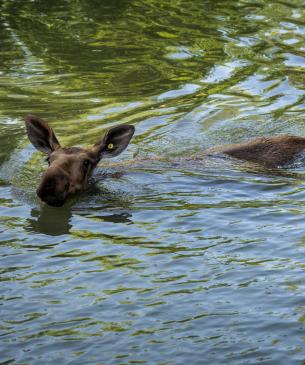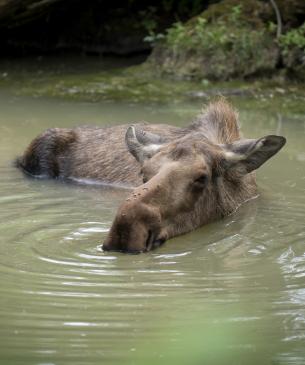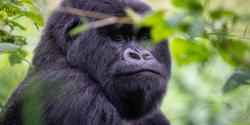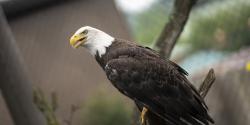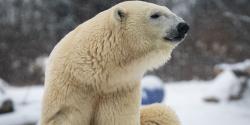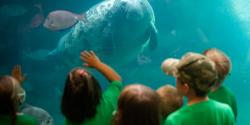Both male and female moose have a thick throat flap called a “dewlap” or “bell.” Only males, known as bulls, grow antlers. Every year, bulls shed their antlers, which then grow back. The new antlers can be up to five feet wide and are made of a mix of calcium and phosphorus, covered in soft skin known as velvet. This velvet has blood vessels that help the antlers grow. By late summer, the velvet dries up, stopping the blood flow, and the antlers harden. Bulls scrape the velvet off by rubbing their antlers against bushes and trees in the fall, just before the breeding season, when they need the antlers to compete for mates. They lose their antlers in winter, and new ones start to grow back in just a couple of weeks. Younger bulls will shed their antlers for the first time in their first year.
Moose have unique features that help them survive in the cold, swim well, and eat different types of plants. Their big hooves have four toes that flex, helping them walk on deep snow and find balance on various surfaces. Long legs allow them to reach higher branches for food, see far to spot predators, run fast, and jump over obstacles— they can run up to 35 miles per hour! Moose are also great swimmers and can swim at speeds of six miles per hour. Their fur is made of hollow hairs, which keeps them warm and helps them float.
Moose have special teeth and mouths that help them eat the many kinds of plants they find. When they eat, they use their front teeth to pull twigs into their mouths and bite them off. Their back teeth then chew and grind the food. There’s a space between the front and back teeth called a “diastema,” where they can hold twigs sideways and strip the leaves off by moving their heads back and forth. After chewing, they swallow the food, but as ruminants, they later bring back the partly chewed food, called “cud,” to chew again and get more nutrients. Their long intestines help absorb nutrients because plant food is not very rich in them. Additionally, their long heads help them reach food high up in trees or even underwater. Their nostrils can close automatically when they go underwater.
Moose have an excellent sense of smell and good hearing, which helps them detect predators in their forest habitats. Their eyesight isn’t the best, as their eyes are on the sides of their heads, creating a big blind spot directly in front of them. However, their keen hearing and sense of smell give them a better chance to escape or prepare for danger.

